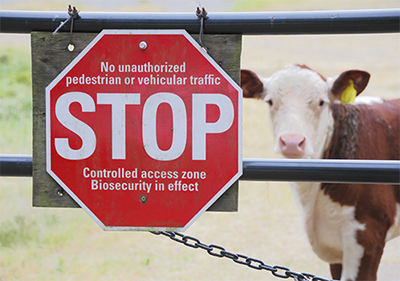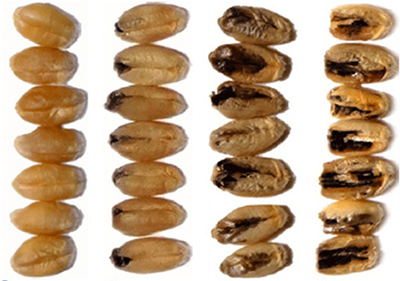Authors: Ahmed Hafi, Donkor Addai, Kyann Zhang and Emily Gray
In this report, The value of Australia's biosecurity system at the farm gate: an analysis of avoided trade and on-farm impacts, ABARES estimates the value of Australia's biosecurity system at the 'farm gate'. The report considers the effect on farm profits of an outbreak of six potentially significant biosecurity threats to Australian agriculture: foot-and-mouth disease (FMD), Mexican feather grass, citrus greening, avian influenza, Karnal bunt and red imported fire ants.
The value of biosecurity is estimated as the sum of on-farm costs and on-farm losses avoided due to biosecurity efforts that target the pathways through which pests, diseases and weeds enter, become established and spread throughout Australia. Avoided costs and losses include money spent on control measures to mitigate damage, and lost revenue as a result of production losses and lost export markets
The report finds that the additional costs and losses incurred by farmers following a pest, weed or disease incursion can be significant. This is particularly the case for biosecurity threats which can disrupt market access and reduce farm gate prices. For example, in the absence of Australia's current biosecurity system, annual profits are expected to decline:
- beef, dairy and sheep enterprises would be 8 to 12 per cent lower due to the higher risk of an FMD incursion
- pig enterprises would be 15 per cent lower
- cropping enterprises would be 7 per cent lower due to a higher risk of a Karnal bunt incursion.


However, broadacre farms typically undertake a range of cropping and livestock activities, and farm profits may be affected by several pests and diseases. The analysis found that without Australia's current biosecurity system, annual broadacre farm profits would be an estimated $12,000 to $17,500 lower due to the higher risk of FMD, Mexican feather grass and Karnal bunt outbreaks combined.
| Farm type | Foot-and-mouth disease ($/yr) |
Mexican feather grass ($/yr) |
Karnal bunt ($/yr) |
Total ($/yr) |
|---|---|---|---|---|
| Mainly crops | 3,693
|
920
|
7,640
|
12,254
|
| Crops and livestock | 7,898 | 1,946 | 2,779 | 12,626 |
| Mainly sheep | 9,533 | 1,822 | 388 | 11,744 |
| Mainly beef | 7,994 | 4,886 | 47 | 12,927 |
| Sheep and beef | 13,172 | 4,254 | 108 | 17,533 |
Overall, the modelling results estimated the value of Australia’s biosecurity system at up to $17,500 a year (in terms of higher profits) for the average farm because of the on-farm costs and losses avoided due to the biosecurity system being in place (Table 1). The farm gate value of Australia's biosecurity system will also be reflected in higher land values. This is because the profits generated by broadacre farming activities are higher than they would be in the absence of Australia's current biosecurity system.
